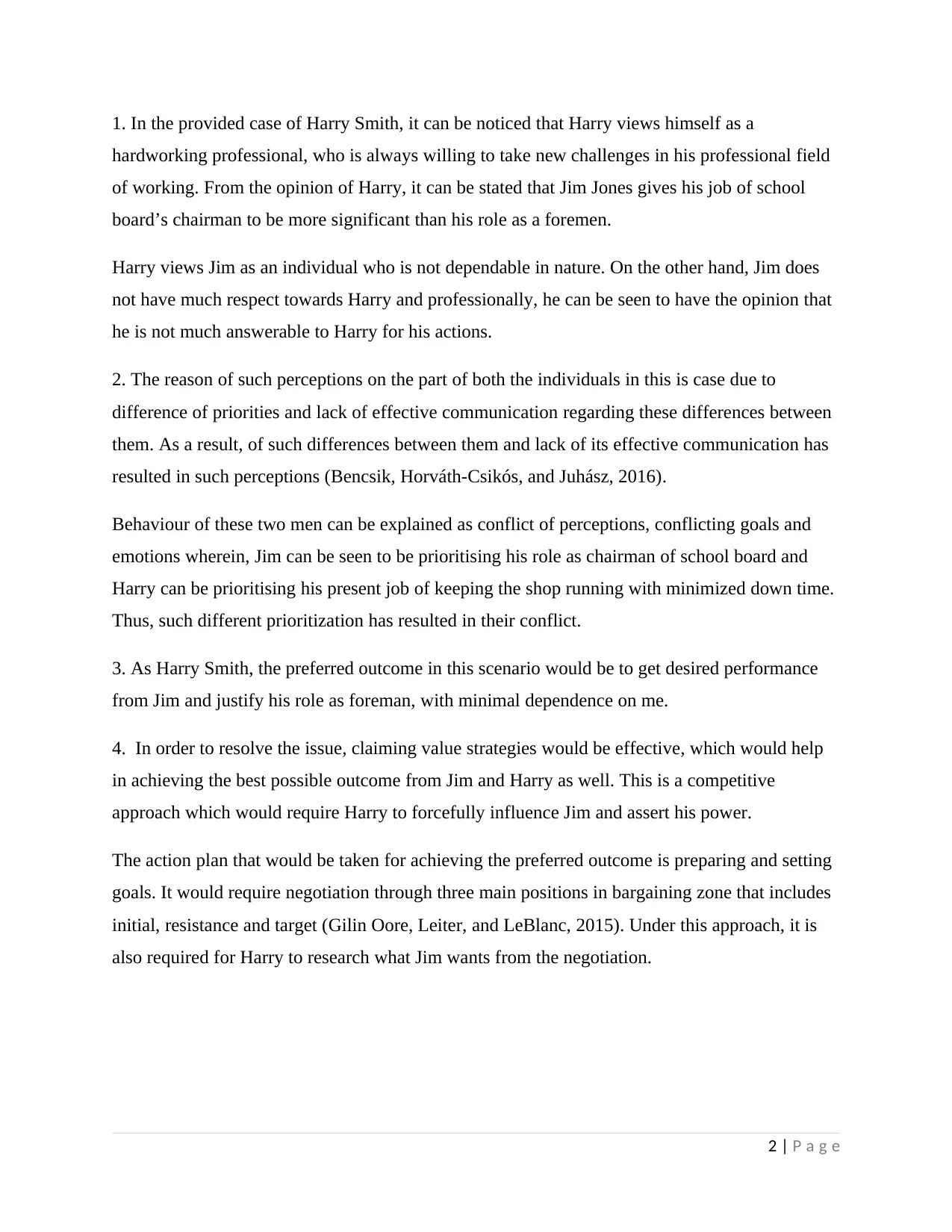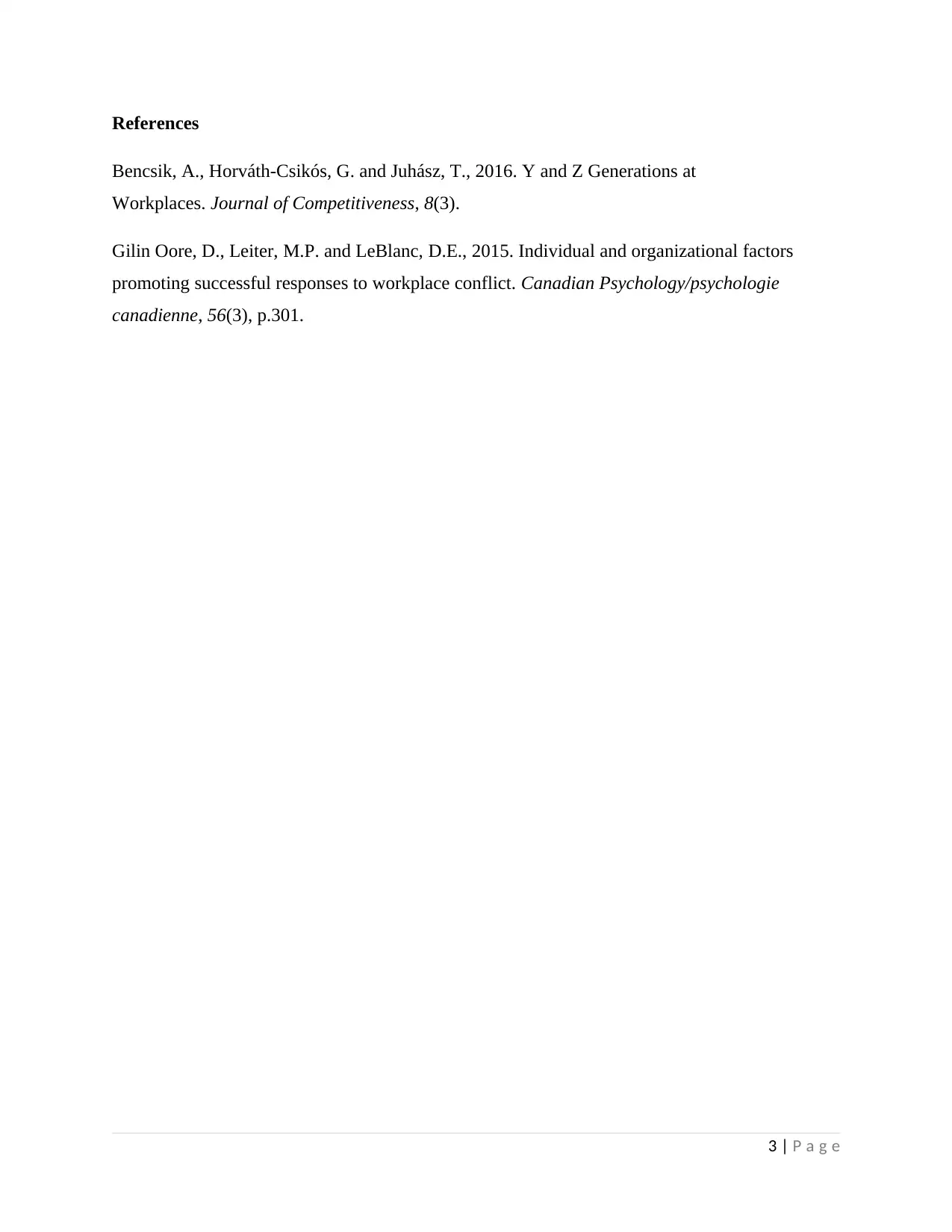Martin Brass Company Case Study: Harry Smith's Leadership Dilemma
VerifiedAdded on 2023/01/09
|3
|473
|54
Case Study
AI Summary
This case study analyzes the conflict between Harry Smith, the supervisor of the maintenance department, and Jim Jones, a foreman at the Martin Brass Company. Harry perceives Jim as unreliable and prioritizing his role as school board chairman over his responsibilities as a foreman, leading to a conflict of priorities and communication issues. The analysis explores their differing viewpoints, explaining their behaviors as a conflict of perceptions and goals. The preferred outcome for Harry is to achieve desired performance from Jim. The assignment proposes a claiming value strategy, including setting goals and negotiation, to resolve the conflict and improve Jim's performance. The case study references Bencsik et al. (2016) and Gilin Oore et al. (2015) to support the analysis.
1 out of 3




![[object Object]](/_next/static/media/star-bottom.7253800d.svg)